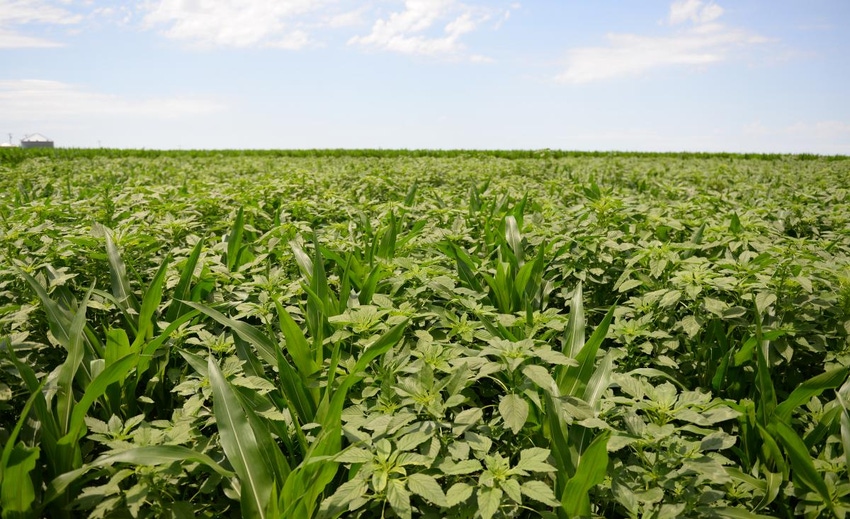March 20, 2017

By Parminder Chahal and Amit Jhala, University of Nebraska-Lincoln
The increased adoption of reduced tillage practices, continuous reliance on single mode-of-action post-emergence herbicides such as glyphosate, and decreased use of soil-applied residual herbicides have favored herbicide selection pressure in Palmer amaranth. In Nebraska, Palmer amaranth populations resistant to 5-enol-pyruvylshikimate-3-phosphate synthase (EPSPS)-inhibitor, and multiple resistance to photosystem (PS) II- and hydroxyphenylpyruvate dioxygenase (HPPD)-inhibitors have been confirmed.
Glyphosate is the most widely used agricultural pesticide globally and glyphosate-resistant Palmer amaranth populations have been reported in 26 states due to the continuous and repeated use of glyphosate for weed control. In Nebraska glyphosate-resistant Palmer amaranth had previously been confirmed in the southwest (CropWatch Kruger et al. May 1, 2015).
In 2016, control failure of a Palmer amaranth population following sequential glyphosate applications was observed in a grower’s field under glyphosate-resistant corn-soybean rotation in Thayer County in south-central Nebraska. Palmer amaranth seeds were collected from that field and greenhouse dose response studies were conducted to confirm its suspected resistance to glyphosate and to determine the level of resistance.
Dose response analysis was performed to estimate the ED90 (effective dose required to control 90% population) values for the glyphosate-resistant Palmer amaranth compared with two glyphosate-susceptible Palmer amaranth populations. Based on the ED90 value, glyphosate-resistant Palmer amaranth exhibited a 37- to 40-fold level of resistance depending on the susceptible Palmer amaranth population being used for comparison (Figure 3). For example, glyphosate─susceptible populations were controlled 90% at a glyphosate rate of 9-10 fl oz/acre, while 365 fl oz/acre was required for glyphosate-resistant Palmer amaranth control. This is 17 times the labeled rate (22 fl oz).
The evolution of glyphosate-resistant Palmer amaranth in south-central Nebraska is of great concern as glyphosate is the most commonly used herbicide in glyphosate-resistant corn and glyphosate-resistant soybean and would not be effective in controlling this weed anymore. Moreover, a Palmer amaranth population with resistance to PS II- and HPPD-inhibitors was reported in a seed corn field within 10 miles proximity (CropWatch Jhala et al. October 4, 2013).
Originally posted by the University of Nebraska-Lincoln.
Glyphosate-Resistant Palmer Amaranth Confirmed in South-Central Nebraska | CropWatch | University of Nebraska–Lincoln
You May Also Like




